In the diagram strings, springs and the pulley are light and ideal. The system is in equilibrium with the strings taut (T>0), match the column. Masses are equal.
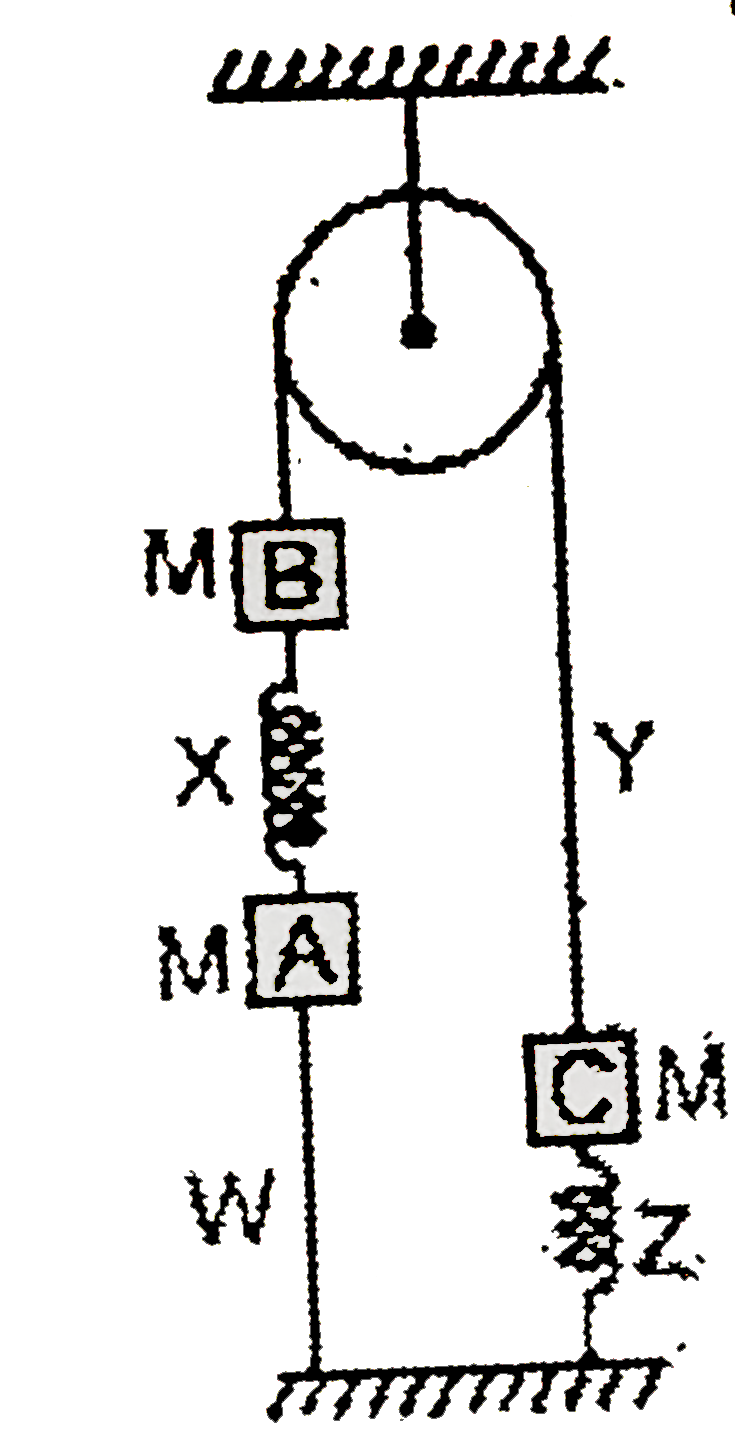
∣∣
∣
∣
∣
∣
∣∣Column -1Column -2(A)Just after string W breaks(P)aA=0(B)Just after spring X breaks(Q)aB=0(C)Just after string Y breaks(R)aC=0(D)Just after spring Z breaks(S)aB=aC∣∣
∣
∣
∣
∣
∣∣
The correct Answer is:A-Q, R, S; B-S; C-P, S; D-P, S
Step by step video, text & image solution for In the diagram strings, springs and the pulley are light and ideal. The system is in equilibrium with the strings taut (T gt 0), match the column. Masses are equal. |{:(,"Column -1",,"Column -2"),((A),"Just after string W breaks",(P),a_(A)=0),((B),"Just after spring X breaks",(Q),a_(B)=0),((C),"Just after string Y breaks",(R),a_(C)=0),((D),"Just after spring Z breaks",(S),a_(B)=a_(C)):}| by Physics experts to help you in doubts & scoring excellent marks in Class 11 exams.
Topper's Solved these Questions
Similar Questions
In the situation shown in the figure, the system is in equilibrium. All the strings, spring and pulley are light. Just after cutting the string AB, then the tension in string GH is ......N. (Take, g=10ms−2 )
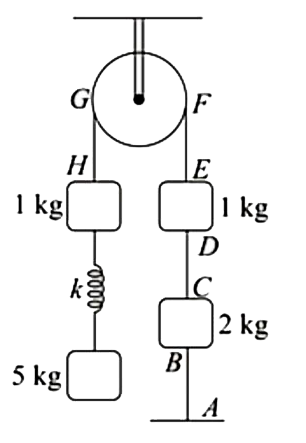 View Solution
View SolutionThe system shown in the Fig. is in equilibrium. Find the initial acceleration of A, B and C just after the spring 2 is cut.
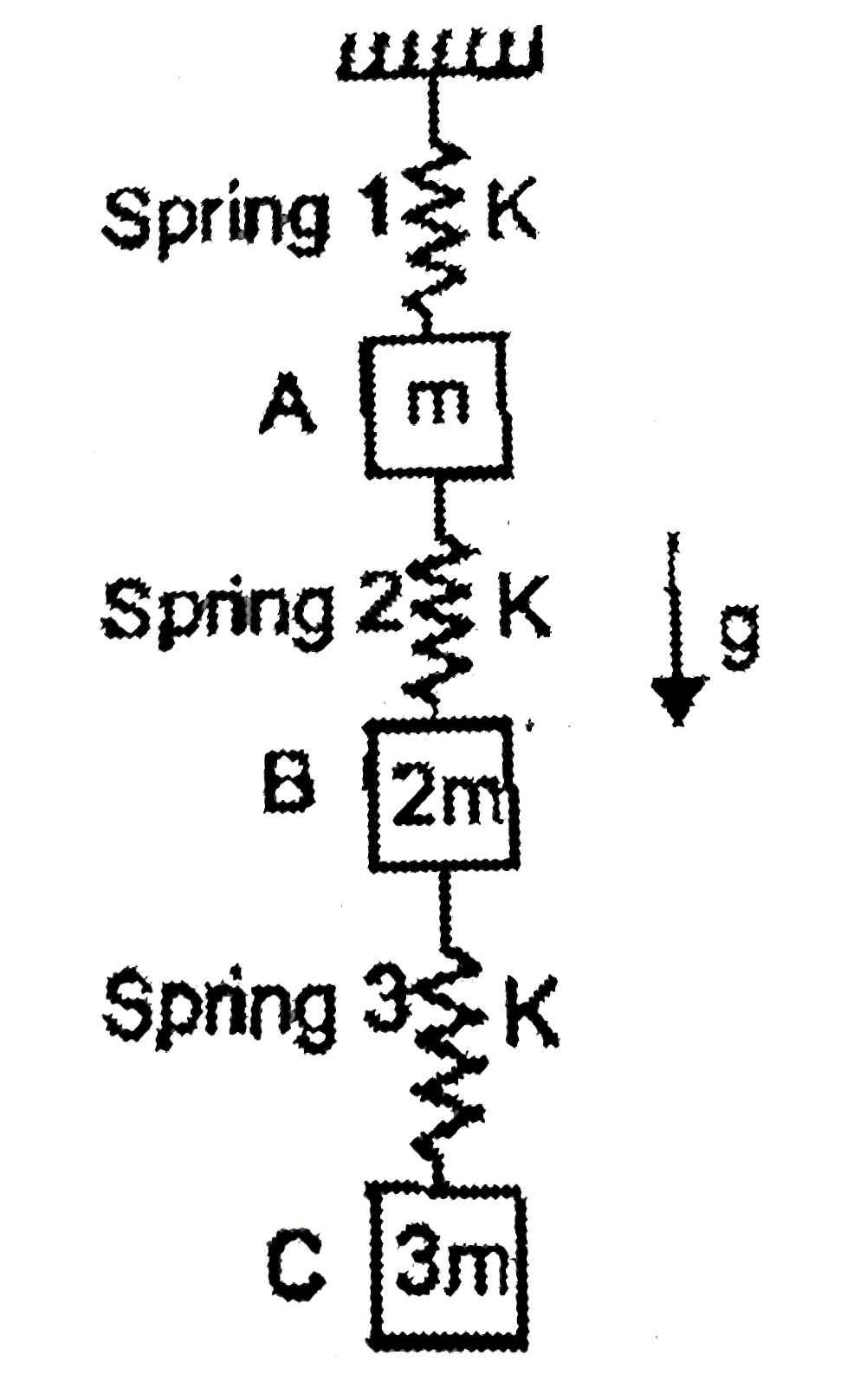 View Solution
View Solution
Knowledge Check
- Question 1 - Select One
System shown in fig is in equilibrium and at rest. The spring and string are massless now the string is cut. The acceleration of mass 2m and m just after the string is cut will be:
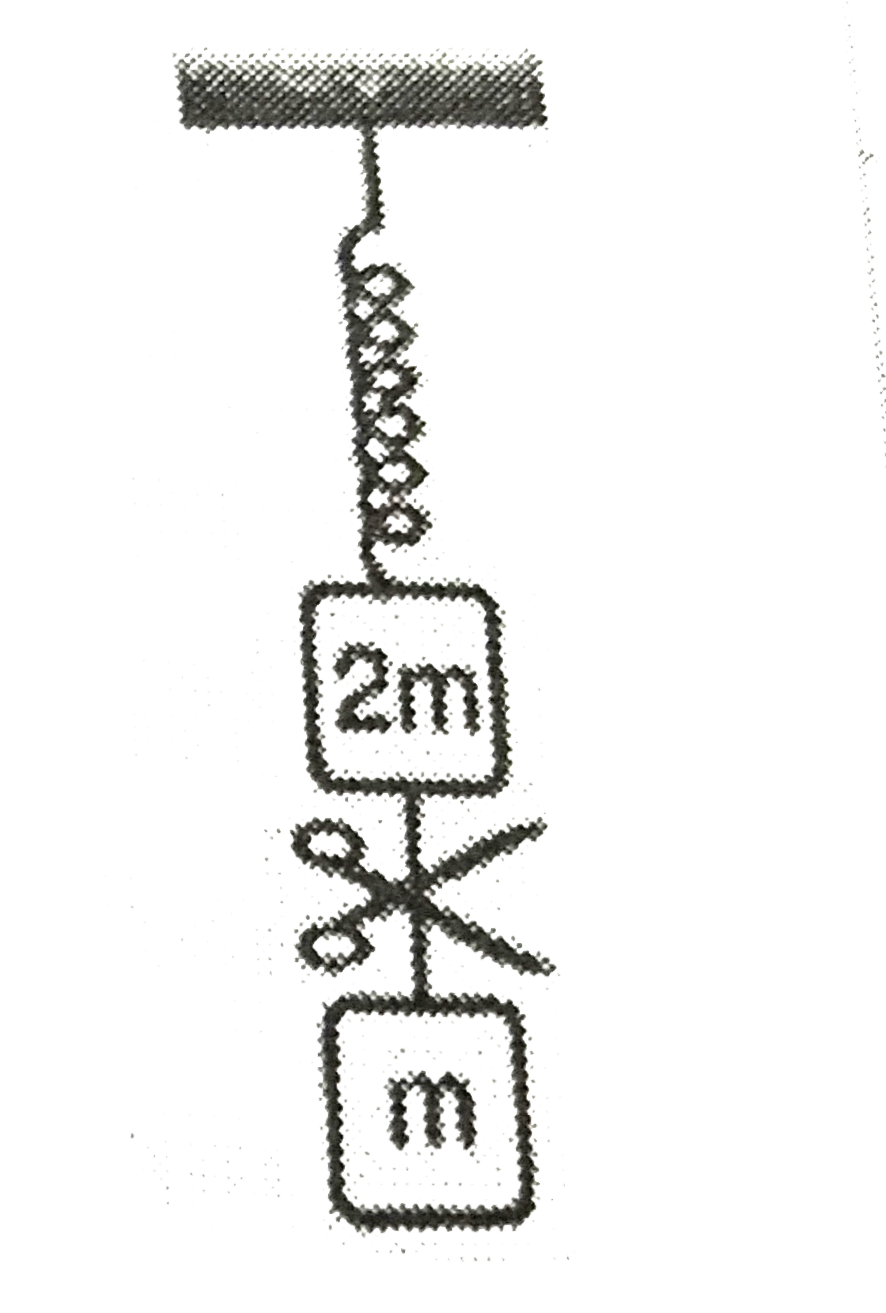 Ag/2 upwards, g downwardsBg upwards, g/2 downwardsCg upwards, 2g downwardsD2g upwards, g downwards
Ag/2 upwards, g downwardsBg upwards, g/2 downwardsCg upwards, 2g downwardsD2g upwards, g downwards - Question 2 - Select One
The system shown in the following figure is in equilibrium and at rest. The spring and string are massless. Now, the string is cut. The acceleration of mass 2m and m, just after the string is cut, will be
 Ag/2 upwards, g downwards.Bg upwards, g/2 downwards.Cg upwards, 2 g downwards.D2g upwards, g downwards.
Ag/2 upwards, g downwards.Bg upwards, g/2 downwards.Cg upwards, 2 g downwards.D2g upwards, g downwards. - Question 3 - Select One or More
System shown in figure is equilibrium in vertical plane. Consider the string and spring to be massless. Both the blocks have same mass 'm'. If the string is cut, then just after cutting it :
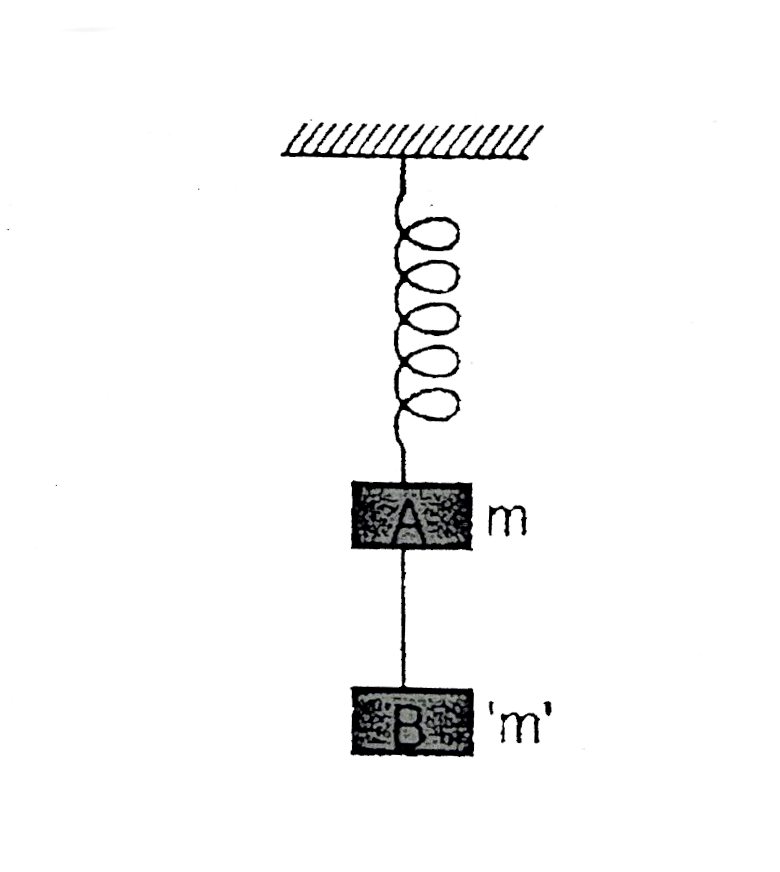 AAcceleration of 'A' is 'g' upwardsBAcceleration of 'A' is '2g' upwardsCAcceleration of 'B' is 'g' upwardsDAcceleration of 'B' is 'g' downwards
AAcceleration of 'A' is 'g' upwardsBAcceleration of 'A' is '2g' upwardsCAcceleration of 'B' is 'g' upwardsDAcceleration of 'B' is 'g' downwards
The system shown in initially in equilibrium Masses of the blocks A, B, C, D and E are respectively 3m, 3m, 2m, 2m and 2m. Match the conditions in column -I with the effects in column -II
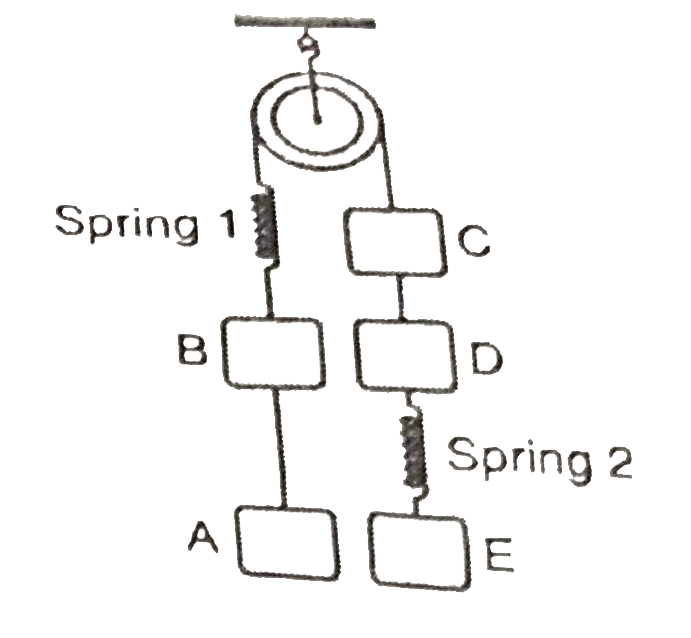
Column -IColumn -II(a) After spring 2 is cuttension in string AB(p) Increases(b)After spring 2 is cuttension in string CD(q) Decreases(c)After spring between Cand pulley is cut tension in string AB(r)Remains constant(d) After spring between Cand pulley is cut tension in string CD(s) ZeroView SolutionFind the tensions in the string (1),(2) and (3) and the acceleration of the mass 'm' just after ( initially system is in equilibrium and at rest, pulley, string, spring are light ):

(a) string (1) is cut
(b) string (2) is cut
(c) string (3) is cutView SolutionFind the readings of spring balances S1,S2 and S3 of the springs shown in figure-2.115(a). If the string snaps at point A find the readings of the three spring balances just after the string snaps. All pulleys and strings are ideal.
View SolutionA block is attached with an ideal spring and string, and is in equilibrkum as shown in Figure. The acceleration of the block just after breaking the string is a1 and just after breaking the spring is a2. Then
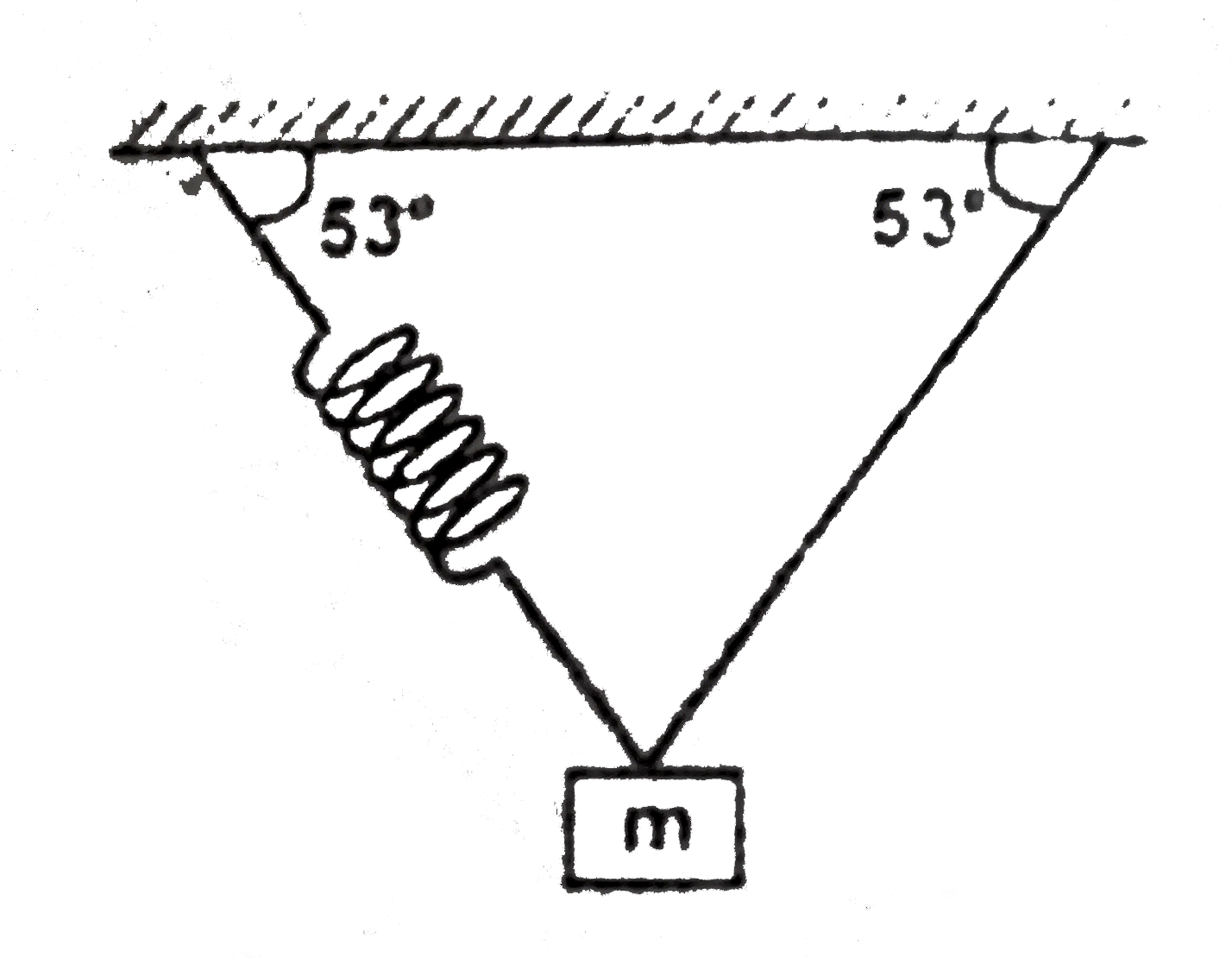 View Solution
View SolutionTwo block of mass 2kg are connected by a massless ideal spring of spring constant K=10N/m . The upper block is suspended from roof by a light string A . The system shown is in equilibrium. The string A is now cut, the acceleration of upper block just after the string A is cut will be (g=10m/s2 .
 View Solution
View Solution

